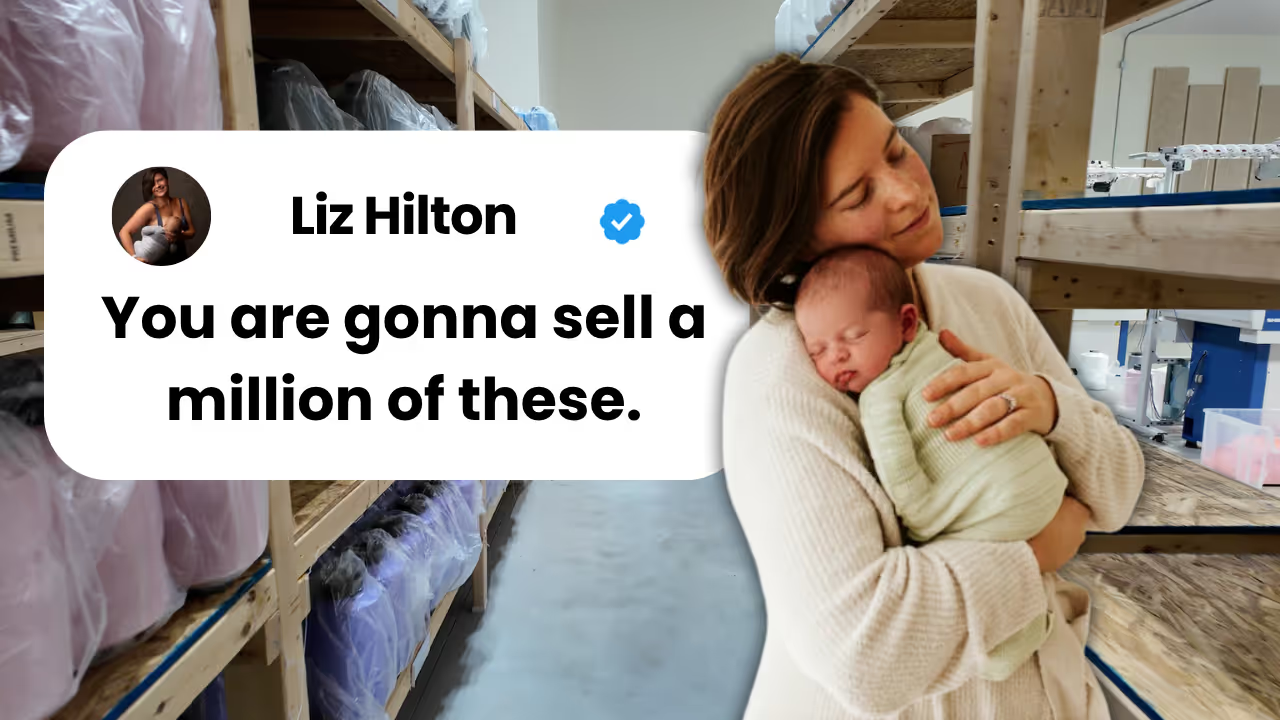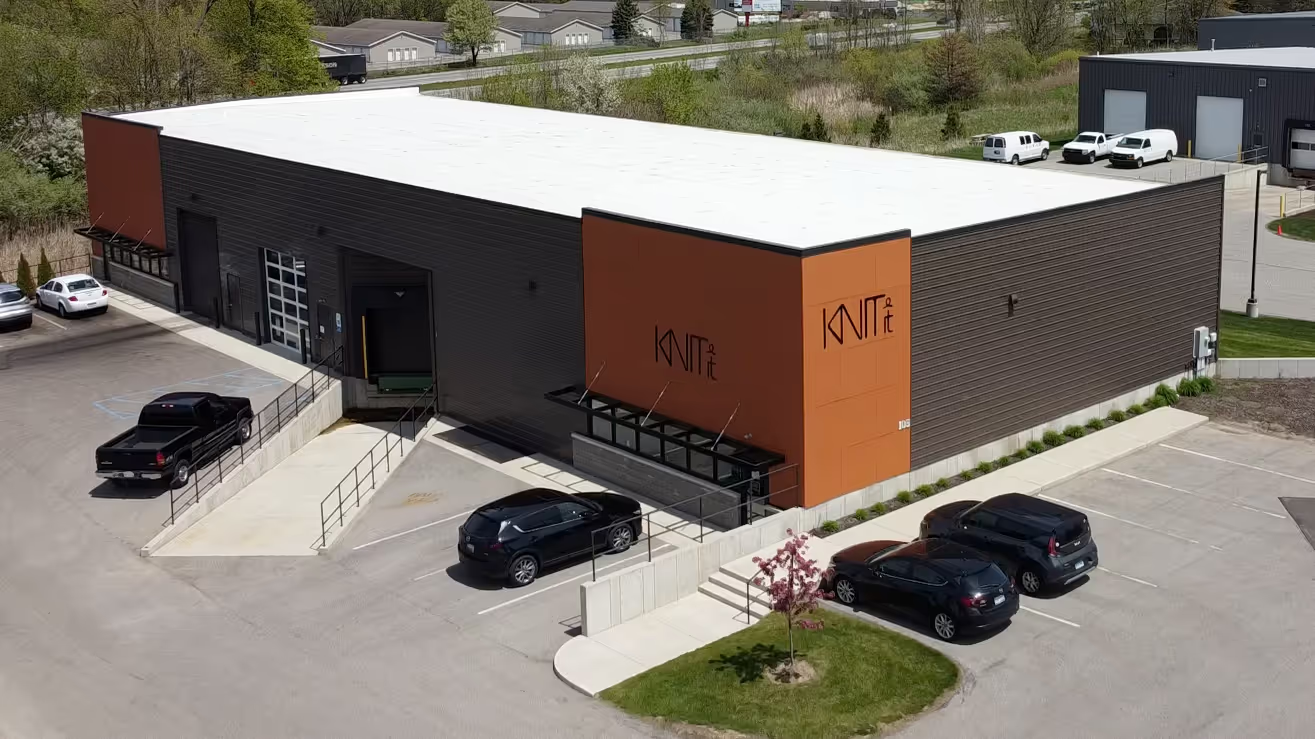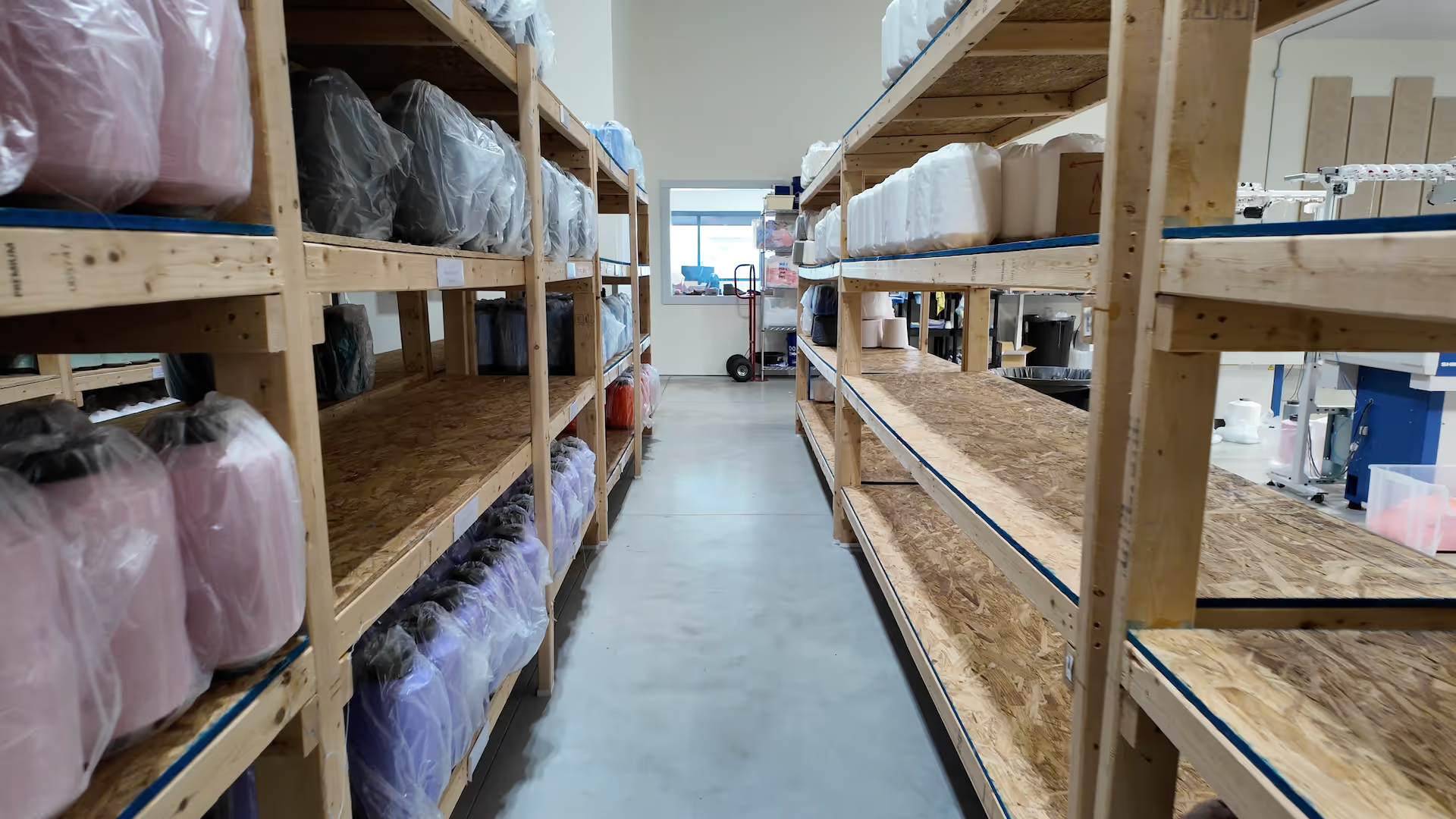A Baby's Sleep Problem Led to a $3.5M Business

"Liz, you are gonna sell a million of these." That was Liz Hilton's husband's reaction when he saw the prototype for the Swaddelini work for the first time.
He might have just said that because it was his first full night of sleep in two months, but he wasn't necessarily wrong either. Liz had just developed a "sleep sack" through advanced knitting techniques that allowed her baby to sleep through the night for the first time since coming home from the hospital.
But selling a million turned out to be harder than expected. She tried retail with no success. She tried Amazon with no success. She tried Etsy. Nothing worked until one video went viral on TikTok.
In this deep dive, I go over how Liz built a short-form video strategy from one viral TikTok video, why she decided to build her own manufacturing facility in Holland, MI, and how her strategy is changing today with organic reach declining across platforms.

The Story of KnitIt
The lead up to KnitIt
Liz had always known she would be in the fashion industry. She started her career by attending the Fashion Institute of Technology in NYC, where she had to pick a specialization.
After looking at the options, she chose knitwear because, as Liz put it, "I knew there was more to garment design than just walking into a fabric store and feeling what fabric spoke to you. I wanted to be in control of the fabric." Knitting offered what she called "a more organic way of designing." Liz felt that the new techniques of knitting were the future.
Liz's instincts about knitting technology proved right in 2012 when Nike launched the Flyknit shoe, which generated over $1 billion in revenue from 2012 to 2018. This created opportunities for knitting professionals everywhere.
Fast forward through a practicum in Germany and various roles in knitting technology, and Liz ended up at Teknit in Grand Rapids, Michigan. There, she learned the knitting machines forwards and backwards while working across different industries outside of fashion like in office furniture and consumer electronics.
By 2015, Liz still believed knitting technology was the future and realized she had all the skills needed to go out on her own. She decided to buy her own machine and start her business as a knitting consultant.
The start of KnitIt
For the first couple of years, Liz's consulting business worked well. She had clients asking her to knit everything from shoes to respiratory tubes to air ducts for aerospace. She was also passionate about education, teaching at universities like the Kendall College of Art and Design and The University of Michigan, training students and engineers to better use soft good additive manufacturing.
Then in 2017, Liz had her lightbulb moment.
Her first baby was two months old and having an awful time sleeping. He kept wiggling out of his swaddle, leaving both baby and parents exhausted. As Liz put it, "I thought, well, what if I just knit a tube and had it pinched at the sides, like it would hug him, but also he could move around because it's 3D knit and soft and stretchy and there are no seams."
Since she had her own machine, Liz had a prototype almost instantly. She tried it on her son that night, and both she and her husband went to sleep. They woke up in the morning in a panic, this was the first time they had slept through the night since coming home from the hospital. They ran to the crib and found their son sleeping peacefully.
Her husband Brad grabbed her arm and said, "Liz, you are gonna sell a million of these."

But as Liz likes to say, "it was an overnight success that only took 10 years" because getting from prototype to profitable business was anything but simple.
Liz spent the next year on research and development, thinking the R&D was the hardest part. She refined the design, got it safety tested, and had other people trial it. By August 2018, she launched the Swaddelini at a Chicago baby show.
It did great in person, but Liz found it very hard to sell through e-commerce. She tried retail partnerships with QVC, HSN, and Bye Bye Baby. She also tried e-commerce platforms like Amazon and Etsy. Nothing was working, and the retail partnerships required expensive product liability insurance while giving retailers huge cuts without guaranteeing volume.
By September 2020, Liz had to unplug from everything. She had lost so much money trying retail and told herself "never again." She decided to just sell on her website and needed to get a day job again to pay the bills.
During these challenging years, organizations like SURGE by Lakeshore Advantage and Start Garden provided crucial support. Liz was able to spend time with other entrepreneurs in what she called "entrepreneur AA" sessions, where everyone would sit in a circle and help each other out. These organizations also provided funding that helped her secure patents for the Swaddelini, which proved invaluable later on.
The big break
In 2021, Liz was introduced to TikTok and she loved it as a user. It was easy to get lost scrolling, so Liz thought "well, if I use it for work I'll end up hating it, so let's do that."
She started creating videos on her new business profile on TikTok beginning January 5th, 2021. On January 7th, 2021, Liz's 11th video went viral on TikTok.
That video now has over 12 million views and on day 1, Liz had 341 sales from all over the world. Remember, she still had a full-time job and two kids at this point.
The viral video happened on a Friday. By Monday, Liz had hired Eden, the daughter of her mom's friend from church, to help her in the garage. She was still trying to balance her full-time job while figuring out how to replicate what had just happened.
Liz didn't just capitalize on that single viral video though. She built an entire social media strategy around short-form content. By the end of 2021, Liz hit $250k in annual revenue.

She then hit some even more impressive revenue numbers:
- 2022: $750k
- 2023: $2.2 million
- 2024: $3.5 million
Manufacturing Philosophy
While most companies would outsource production to cut costs, Liz has taken the opposite approach. She's built her manufacturing operation in Michigan, and it's become a key part of both her business model and her values.
When Liz was struggling with capacity in her early years, she called a factory in California for help. They didn't have the right machines, but their sister factory in China did. They told her they could make the Swaddelini for $20 in California or do it 10 times cheaper in China. Since her product sells for $40, outsourcing would have been the obvious business decision.
But Liz realized that keeping manufacturing local creates more than just jobs. When she hired Eden in her garage, and later brought on another new mom who didn't want to put her baby in daycare, she saw the profound impact her business could have on her direct community. As she put it, "I started to realize what a profoundly positive impact KnitIt could have in my direct community if I kept manufacturing domestic."

The manufacturing philosophy extends beyond just keeping jobs local. Because KnitIt controls the entire production process, they can maintain quality, move quickly on new products, and even offer the unique experience of customers visiting the facility to see how their products are made.
The Growth Strategies of KnitIt
Social Media (Short-Form Content)
TikTok alone drove KnitIt to $250,000 in annual revenue, but there are some interesting lessons that Liz learned with short-form content that go against conventional wisdom.
You'll often hear advice to "focus on one platform at a time," and that's generally good advice. But if you're doing short-form content, Liz's experience shows that's not necessarily true.
Liz posts her short-form content everywhere she can. If a platform is prioritizing short-form videos, KnitIt is there: TikTok, YouTube Shorts, Instagram Reels, and Facebook.
And it works. Here's one video across three platforms:

- TikTok: 8.9 million views
- YouTube: 11.4 million views
- Instagram: 170k views
This pattern repeats across many of her videos, though the winning platform varies. The content might be good, but it might not be the right fit or hit the algorithm the same way on each platform. By posting everywhere, Liz maximizes her chances of catching lightning in a bottle.
Liz's most successful content is authentic and genuine, often featuring her babies and showing the product actually working. Because the Swaddelini genuinely solves a problem, she can capture a baby crying, put on the swaddle, and show them calming down and going to sleep, all within 60 seconds.
How the strategy is evolving in 2025
2025 has brought new challenges. Liz's social media engagement has gone down significantly, and revenue is lower than 2024. This aligns with the Law of the Double Peak: new platforms prioritize organic growth to attract users and creators, but once they go mainstream, organic reach declines and paid reach becomes prioritized. I talked about this in the deep dive I did on Amy Porterfield.
To combat this, Liz has started paying for ads on Meta and TikTok. Her key insight: "you don't create ads, you create TikToks." The best performing videos that drive sales are still genuine, authentic, and entertaining, just with ad spend behind them.
If you want to learn more about KnitIt and the Swaddelini, check out their website at swaddelini.com.

